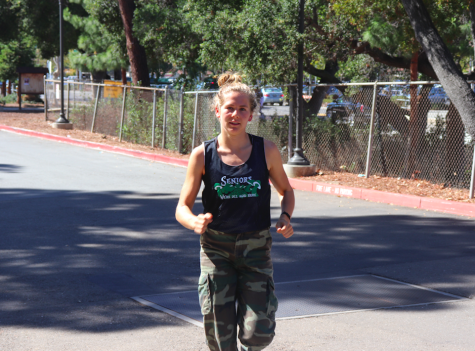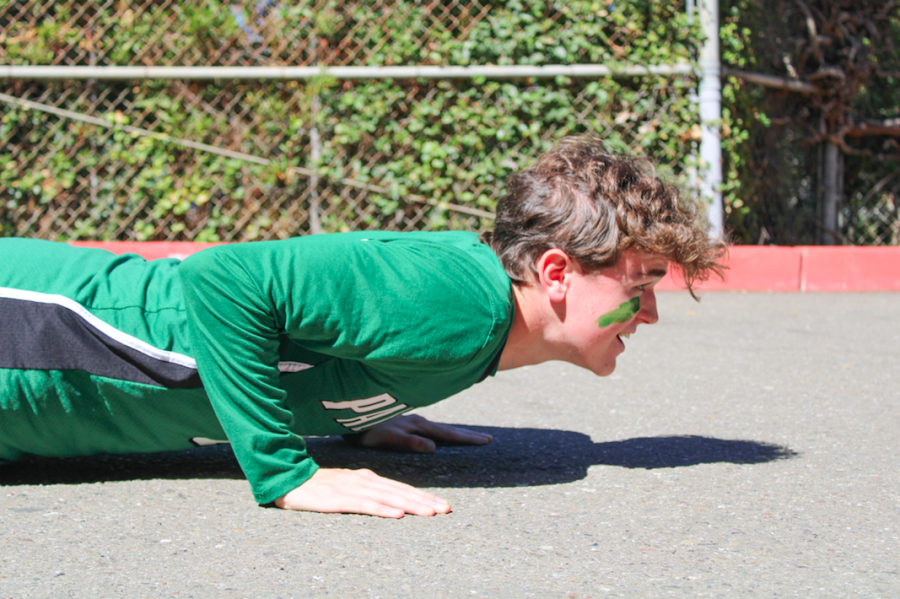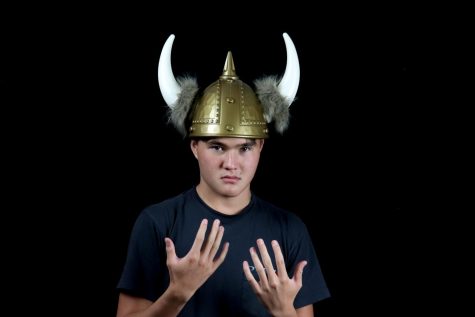Viking Tries: Military Boot Camp
October 19, 2022
West Point, also known as the United States Military Academy, was founded in 1802, just a decade before the United States would declare war for the first time.
Fitness tests, however, date back to the year 1858. They intended to evaluate the fitness of aspiring American military cadets. In those days, Cadet Candidates (CCs) had to perform a 15-foot wall climb, 15 hands high horse vault (5 feet), 10-foot ditch leap, 1 mile run under 8 minutes or 2 miles run under 18 minutes, 4.5-mile walk in 1 hour, and a 3-mile ruck in 1 hour with 20-pound ruck, arms, and equipment.
Nowadays, the test –– and the academy ––look a lot different. Not only have women been seen on campus since 1976 (changing the paradigm of the fitness test), but the physical standard has likewise shifted.
The USMA website states, “The CFA is a test of strength, agility, speed, and endurance. It is used to predict a candidate’s aptitude for the physical program at the service academies.” Staff member Jackson Martin reflects on the physical rigorousness of the standards of the USMA and his feelings before attempting the exercises.
“I’m excited to test my abilities,” Martin said. “I think that it’s going to push my limits and I’m gonna be
stepping out of my comfort zone. I’m just going to push myself as hard as I can and do my best”
CCs must complete a basketball throw from their knees, pull-ups, a 40-yard shuttle, 2 minutes of sit-ups, 2 minutes of pushups, and a mile run –– in the listed order. Each segment requires a three-minute break after it, and an eight-minute break before the mile. All exercises must be supervised by a PE teacher or other certified instructor.
Additionally, both the pull-ups and push-ups must be filmed and submitted to the West Point application portal for admissions officers to check for the proper form.
West Point publishes maximum or “top” standards in addition to the average standards for each exercise and gender. See the chart below for these numbers and how you would compare.
“After seeing the maximum performance score, it really showed me how hard it is. It really shows how much time and effort it takes to put up such high performing scores,” Martin said.
Here at Viking, the staff is full of athletes that excel in their respective fields –– whether it be cross country, swimming, football, water polo, or field hockey — but how will they perform with these rigorous tests? Will they pass the standard of the United States Army?
By comparing the test results of staff members to said maximum and average scores, we will evaluate their readiness and fitness, and how they would shake up in comparison to a regular applicant.
First, contestants tried the basketball throw. Although this seems like a relatively basic exercise, the staff found it much more challenging than expected. A CC is required to sit on both knees and twist their upper body, throwing the basketball forward with one hand. The throw measures upper-body strength and throwing-arm ability which at the surface seems pretty straightforward, but throwing a basketball while sitting on both knees is quite the challenge.
The maximum West Point standards for the basketball throw are 102 ft and 66, for males and women respectively. The average standards are 67 ft and 41 ft, again for men and women respectively.
Staff members Ivan Ijzerman and Martin did the best out of the whole staff, throwing 44 and 63 feet respectively. Both, however, are still below even the average standards for CCs.
“Being on the water polo team helped me with the basketball throw because I was used to the motion of throwing the basketball,” Ijzerman said, “The challenge was really difficult and it made me realize how difficult military training really is.”
A similar trend was seen for other upper-body exercises: nobody was able to reach the average pull-up or push-up numbers for their respective genders, except Yasmin Friedrichowitz on pull-ups.
According to staff member Elizabeth Fetter, this is because the upper-body exercises are more challenging than the others.
“I was worried about the pull-ups and the pushups because they take a lot of upper body strength,” Fetter said. “I think a lot of sports prioritize endurance and leg strength through running. There are hardly any sports I can think of ––besides weightlifting or wrestling –– that are solely, or even mostly arm-based.”
It seems like Fetter’s theories hold, as most staff members were able to meet or even exceed the standard for the sit-ups and mile run.
“I think the sit ups coming after the push ups are kind of a stress reliever. The situps were a good way to cool down and prepare myself for the run,” Martin said.
In addition to depicting the larger overall trend of strong lower bodies and core, and weaker upper bodies, the fitness test also has more specific prioritization between sports. Martin and Ijzerman, basketball and water polo players respectively, did the best relatively on the basketball throw. The sport of basketball trains athletes for throwing and shooting: the same that was being tested in this exercise. Likewise, water polo is a sport that prioritizes a similar motion to the throw.
“I thought that being in shape to run up and down the court would help me in running the mile. I was a little disappointed in my performance based on the fact that I played basketball.” said Martin.
Similarly, Fetter is a runner. Fetter competes for Paly in both cross country and track and field. Friedrichowitz, a swimmer, has been a long-time runner, competing in middle and early high school. Fetter far exceeded the average time for runners; running faster than the school maximum standard.
“I knew that I would have the running one down because that is my kind of sport,” Fetter said. “I hope that can carry my score and make up for any lacking from other categories.”
What Fetter is referring to as “carrying her score,” is the idea that West Point admissions average the test results. The reason why no minimum is posted –– besides not wanting to encourage cadets to service for a “minimum” standard –– is because there isn’t one. If a cadet scores very poorly on the pull-ups, for example, they can make up for it by excelling on other exercises.
“I was surprised by how hard the average times were. This just shows how high the military standards are.” Marburg said.
Even with this “averaging” notion, however, CCs cannot score “zero” on any category. This speaks to the physical fitness and rigorousness of the school and the test.
Based on the results from the Viking staff, nobody would pass the test with glowing scores. Martin reflects on how this fact has changed his mindset since before the test.
“I have a lot more respect for those people that put in the time and effort and work to get into the military,” Martin said. “I think that’s a really hard feat and it takes a lot of practice. Maybe if I kept training for a couple of years I could make it, but I’m just not fit for it right now.”
Overall, this test has assured Viking staff of the rigor of the Military fitness test and increased the estimation of the school and students that attend West Point.










